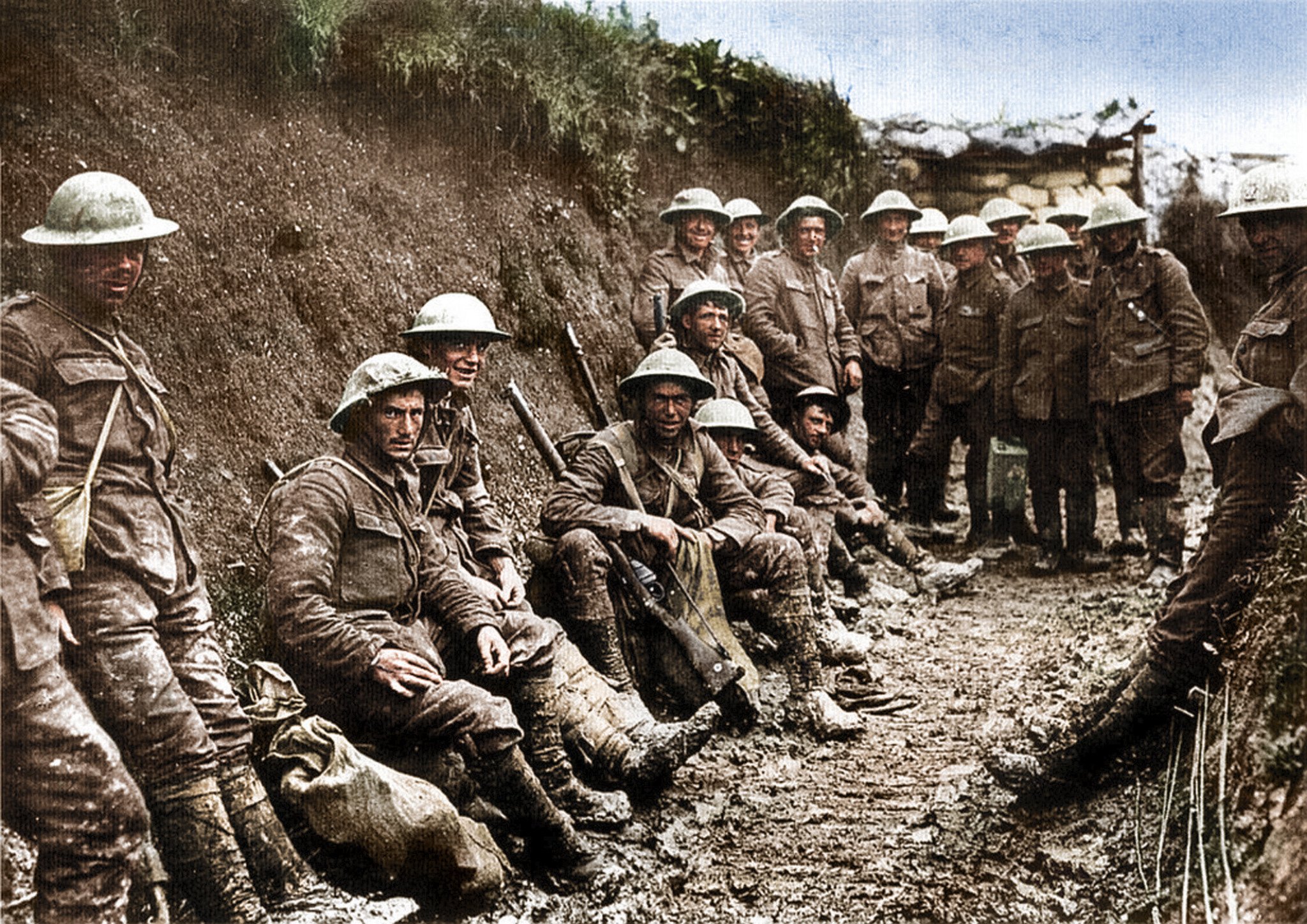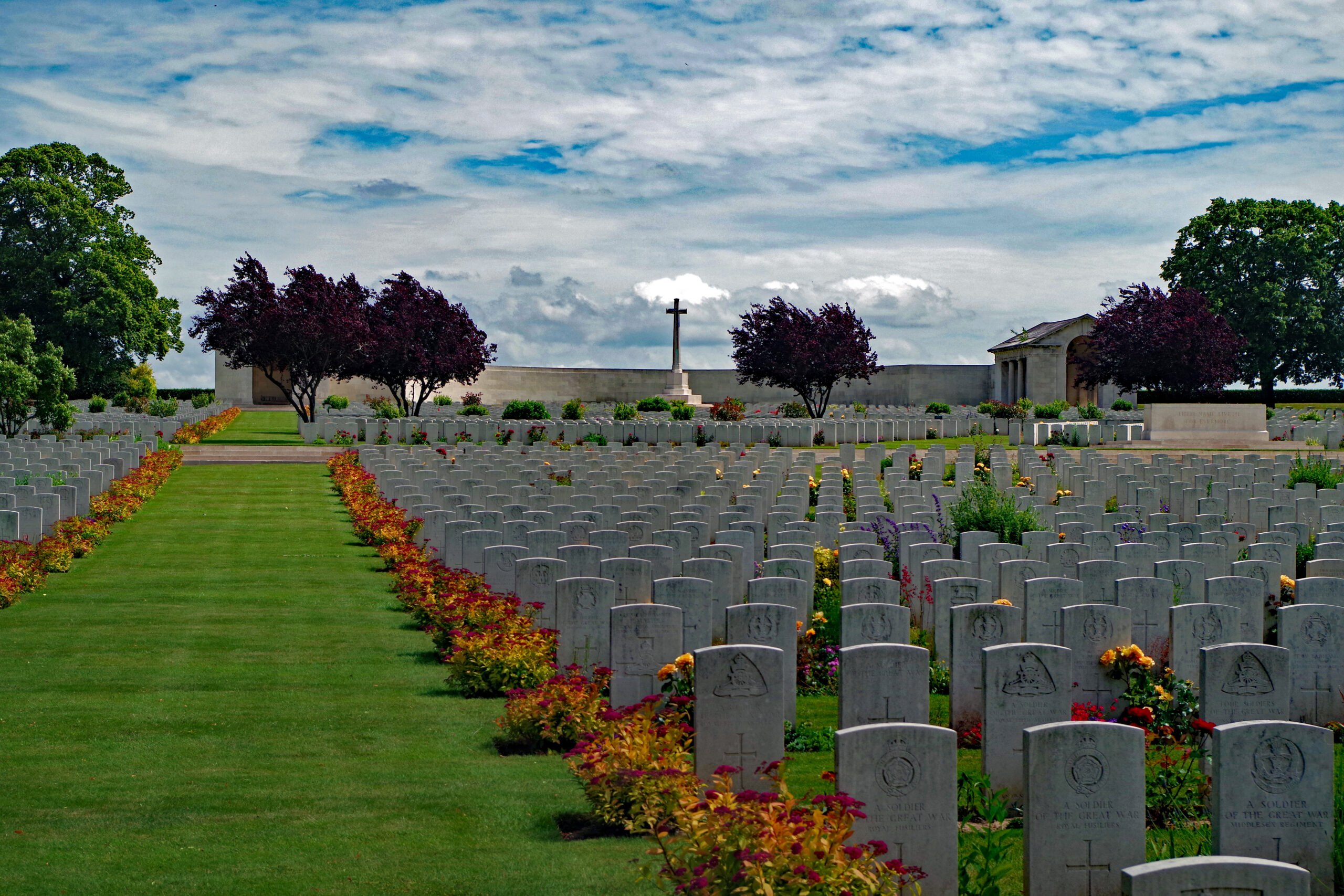The Battle of the Somme
The year 1916 was nicknamed “The Year of Battles” by those who lived and fought the Great War. It’s remarkable that in a war that killed tens of millions of people and wounded tens of millions more that one single year should be known as “The Year of Battles”. It got that name in the summer when the two largest battles in human history (at that point) and the longest battle of the Great War were all being fought concurrently. These battles were the Battle of the Somme, Russia’s Brusilov Offensive and the Battle of Verdun respectively.
Those three battles, though geographically spaced out, were intertwined.
At the Second Chantilly Conference in December 1915, Entente High Command agreed that in the summer of 1916 they would launch simultaneous offensives on the Eastern, Western and Italian Fronts. This would prevent the enemy from being able to transfer force to one threatened point since there would be multiple threatened points. In February 1916, it was decided that the Western Front offensive would take place where Sir Douglas Haig’s British Army’s flank met Josef Joffre’s French Army at the Somme River in Picardy. The thing is, German Army Chief of Staff Erich von Falkenhayn launched the Battle of Verdun just a few days later, and this would soon colour the plans.
By May, with so many French forces being diverted for Verdun, the Somme Offensive was not to be the decisive battle, but the French would support the British in a battle to relieve Verdun, forcing the Germans to commit troops from one to the other, but also keeping German troops in France, so they didn’t head to the Eastern Front to fight the Brusilov Offensive when it got going.
Falkenhayn was planning a spoiler attack against the Somme, but that was cancelled when Brusilov went off in early June and smashed through the Austro-Hungarian lines, so all summer long he was forced to send troops over there to prevent the catastrophe from worsening.

The Battle of the Somme began on July 1, 1916, with the Battle of Albert, postponed by two days because of bad weather. There was a week-long preliminary artillery barrage to soften up the enemy defences, but they were pretty solid by this time. The Germans had, after the autumn battles of 1915, really begun to construct a defence in depth. The barbed wire between them and the enemy was now two belts, not one, nearly 30 metres wide and nearly 15 metres apart. The front line was three lines – three trenches, connected by traverse lines about 150 metres apart. The first was predominantly manned by sentries in concrete bunker recesses, with the main forces and reserves being further back. There were a series of strongpoints around a kilometre behind this system, and they now had a back defensive line (a back system of trenches) nearly 3 kilometres behind the front defences but connected to them by traverse trenches and phone lines that were dug over 2 metres into the ground, which kept the troops in contact with the artillery.
This last position was beyond the range of the Allied field guns, so if they were to break through the first lines, they would have to pause their attack just to bring the guns forward. There were weaknesses to this system; the chalky ground, the forward slope of the front trenches, and the fact that even in their new dugouts, most of the actual fighting force was still within a kilometre or so of the actual front.
The Entente artillery barrage was close to two million shells on an 18 kilometre front. Though many were duds and they mainly just churned up the ground instead of destroying the defences, Entente morale was high. The battle commenced, with the British soldiers singing:
“We beat them on the Marne,
We beat them on the Aisne,
We gave them hell at Neuve Chappelle
And here we are again.”
It’s really the first day of the Battle of the Somme that inspired Motörhead’s Lemmy to write the song “1916”. It is that day that is mainly remembered for the casualties of nearly 20,000 British men before noon. There are two schools of ‘blame’ for this.
John Keegan writes: “This is the moment that has come to symbolise the whole of the Great War. The “lions led by donkeys” school see it as a savage indictment of the stupidity of British generals; the long lines of overburdened men stumbling toward the German machine guns are painted as victims, dying for no reason. However, it is crucial to dispel that myth. The British generals’ tactics were the best that could have been conceived at the time…”
A complete disaster
Either way, the British attack on that day was a disaster. The artillery in many places failed to cut the barbed wire, especially when fire shrapnel shells were fired mostly, and not high explosive shells. The German defence system was still totally intact, and the attacks were not really so much a story of British incompetence, but rather the strength of the German defences and their resilience. There were approximately 100 German machine guns in armoured nests that survived the artillery, and they opened fire as the infantry poured from the trenches. The attackers had to huddle together to get through the surprisingly small gaps in the barbed wire and there, they were simply mowed down.
Most British soldiers carried over 30 kilos of equipment which comprised a rifle, grenades, ammo, rations, four empty sandbags, a shovel, field dressing, a steel helmet, two gas helmets, a water bottle and a mess tin.
General James Edmonds writes postwar: “The weight of this equipment made it difficult to get out of the trench, impossible to move much quicker than a slow walk, or to rise and lie down quickly.”
The British took two villages that day, but also took 57,470 casualties, according to Peter Hart, and 19,240 of those were deaths. There were happenings such as this: the 6th Royal Warwicks reached their goal, but when German machine guns hit them from both flanks they retreated to their starting point. 836 men had set out, 520 were killed and 316 were wounded. Every single man was either killed or injured.
On the “positive” side, the Germans immediately transferred two divisions up from Verdun, which might have prevented them from launching attacks there, and the French attacks at the Somme just south of the British were relatively successful. For starters, the Germans were not expecting an attack there, and the French had way more heavy guns and destroyed a lot of the defences, putting the machine guns out of action.
They overran the German front lines and took several villages, but knowing that the British advance stalled, they paused, and this gave the Germans time to reinforce, so over the days that followed they were getting hit as badly as the British. It was not to be a picnic for the Germans either though, since Falkenhayn ordered that all ground lost would absolutely have to be recovered no matter the cost.
The first phase of the Battle lasted for two weeks, though the whole battle took place across 104 days.
In this phase of the Battle, British General Headquarters repeatedly reported that the Germans were on the verge of collapse, but what they failed to do was ensure that their attacks were simultaneous or supported by as much artillery as possible. The results of this style of “command” speak for themselves. Between July 3rd and 10th, the 23rd Division of III Corps attacked Contalmaison eight times. Just to their right in that same period, the 17th Division of XV Corps launched 11 attacks against the next trenches over. Not once did these attacks happen simultaneously and one Corps’ artillery assisted the other Corps just once. Those divisions endured huge casualties for small advances. Maybe the tactics used were the best available, as Keegan wrote, but the strategy sure wasn’t.
After the first 13 days of the battle, British casualties stood at 85,000. Even though it was a number of narrow-front attacks most often without sufficient artillery that enabled the enemy to concentrate reserves, they did take various fortified positions in a fairly short time period. On July 1st, they took nearly 8 square-kilometres; from July 2nd to the 13th they took 50. So as long as they were willing to disregard the enormous casualties, this was a period of steady achievement.
The Germans
The Germans were, however, not on the brink of collapse, though they were in some disarray. Between their lines being overrun, a lot of the batteries being knocked out by artillery and Falkenhayn’s insistence that every fragment of territory lost be immediately recovered, by this time all the German reserves had been used. A tactical withdrawal seemed like a good idea, but when one commander planned this, Falkenhayn fired him and issued orders to counterattack to the very last man.
Here’s a quote from “The Somme”, by Robin Prior and Trevor Wilson: “It is important to take note of this directive. We have witnessed so many examples of ineptitude on the part of the British command that it is important to remember that they could be equalled or exceeded by the Germans whenever the opportunity presented.”

The battle lasted way longer than two weeks, finally winding down in mid-November when both sides hunkered down and endured the winter weather. It saw fascinating episodes such as the Battle of Flers-Courcellete, where tanks were used in battle for the very first time, but what it saw by the end was that for all of those casualties, well over a million, the British and French advanced some 10 kilometres on a front that was 26 kilometres wide.
Until the 1930s, the popular British narrative was that it was a costly victory, but still a victory, over a brave and hardy opponent. Since then, the story of mud, blood and total futility has gained more and more ground, though both schools still exist.
As for Lemmy writing “1916”; maybe he imagined what it was like at home in England, where wounded British men began reaching London in early July in immense and endless convoys, even as the battle became a struggle for small woods and tiny villages. Proper identification for hundreds of thousands of the dead proved impossible, as artillery tore up the bodies and then the corpses, tearing up with it the hopes and dreams of an entire generation.
The story of the boy soldiers of World War 1 inspired us to cover Motörhead’s song, ‘1916‘. Take a look at the lyrics here.
If you’re interested in a more visual interpretation of this story, watch our Sabaton History episode, ‘1916 Pt. 3 – The Battle of the Somme’:





















